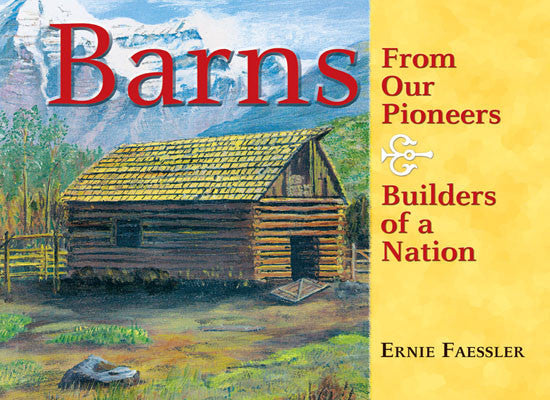

Barns
By: Faessler, Ernie
ISBN: 0-88839-614-7
Binding: Trade Cloth
Size: 8.5" X 11"
Pages: 72
Photos: 0
Illustrations: 32
Publication Date: 2005
PR Highlights: Oil paintings of historic barns
PHOTO Highlights: 32 color reproductions of author's paintings.
Description: Reproductions of oil paintings of pioneer barns built in the 1800s to the early 1900s. Each image is annotated with a personal story or reflection by the author. Artist Ernie Faessler has dedicated his artistic energy to preserving on canvas the heritage of North American barns. This book includes thirty-two color reproductions of his paintings of pioneer barns built during the period of the mid-1800s to early 1900s.
Some of these barns still stand in good condition, others have collapsed or are deteriorating from neglect, but many others have been demolished to make way for more modern structures. While many of these barns no longer serve their original agricultural purpose their historical legacy is invaluable - they convey the community spirit and diversity of the pioneers who built them.
Author Biography:
My father immigrated from Switzerland in 1923 to Langley, British Columbia where I was born. At the time it was difficult for him to obtain employment. It was shortly after World War I and it seemed that we weren't wanted due to our German-sounding name, so my father took advantage of the government's offer of free land 300 miles north to any pioneer willing to homestead there. We settled near Bridge Lake, thirty miles east of what is now 100 Mile House. We moved into an abandoned trapper's cabin at first because there was not enough cleared land to build a house right away.
Our life was simple: no electricity, running water or telephone. But we worked hard and our efforts were focused on survival: hunting, fishing, berry picking, vegetable gardening and lots of canning for the winter.
When I was very young I would draw pictures on the chicken house walls. When I was in school I drew cartoons. After I received a paint set for Christmas one year, I took a correspondence course in watercolours. During my years in military service overseas, I visited as many art galleries as possible and did some sketching. I also noticed that most of the paintings in the European galleries were oil paintings.
Barns have always inspired me, because they were the means of a livelihood. I have watched pioneer men and women toil and endure hardships through all seasons of the year trying to garner a living from the land. Every barn means someone's lifetime of hardship, but they built a country that prospers to this day.